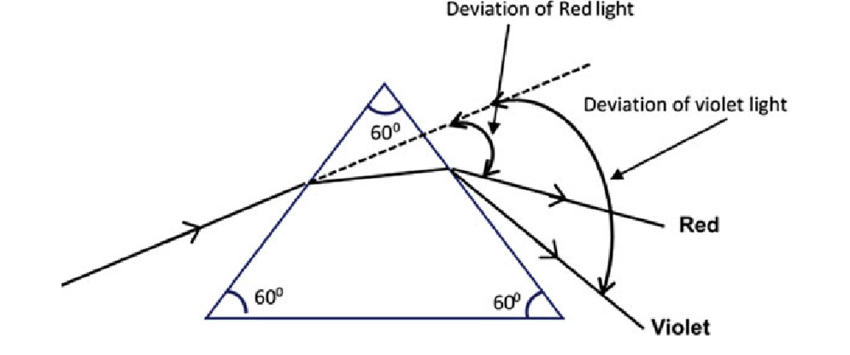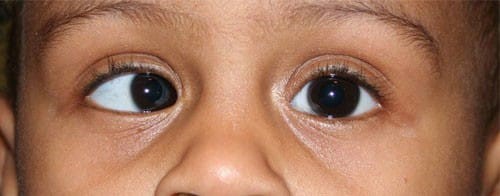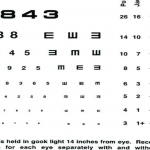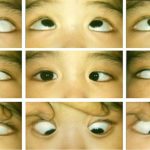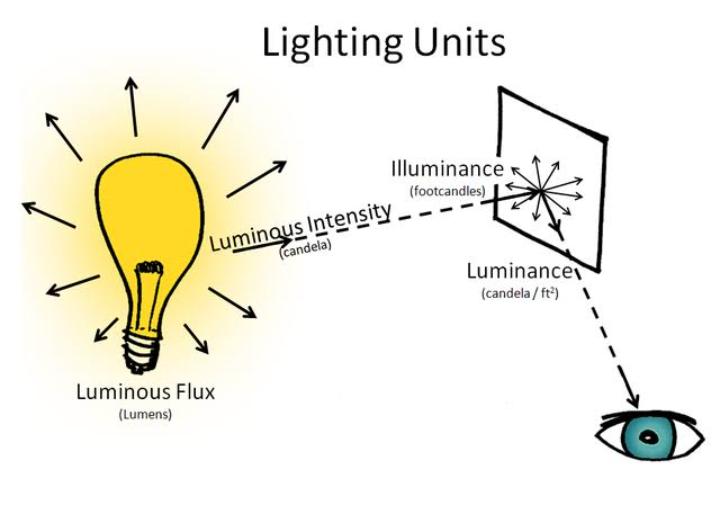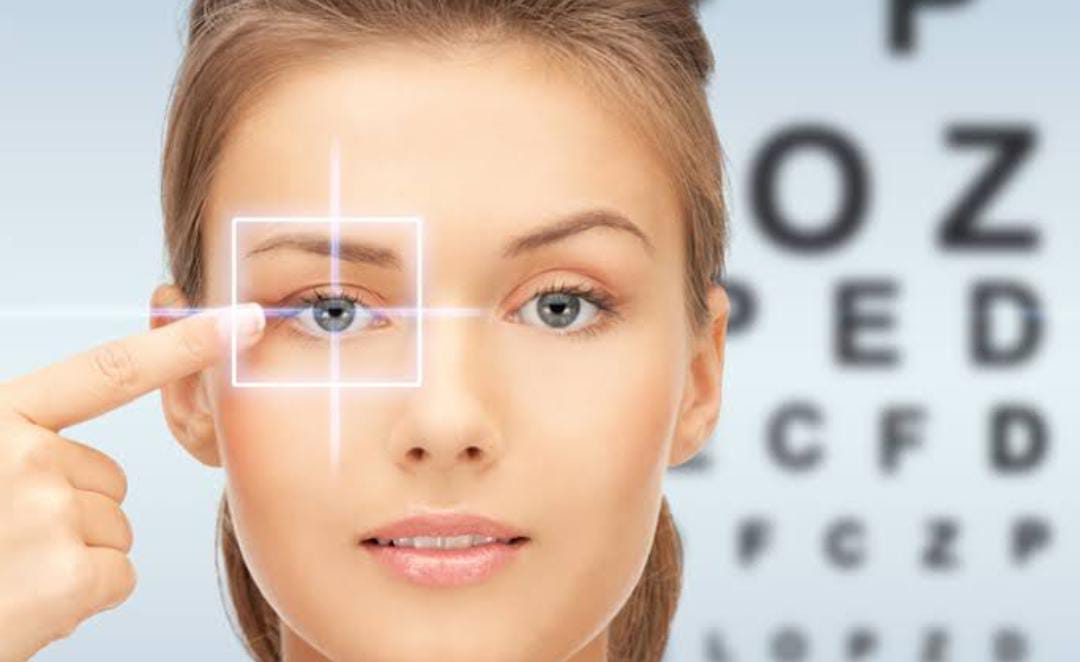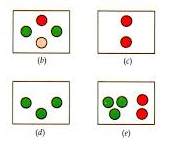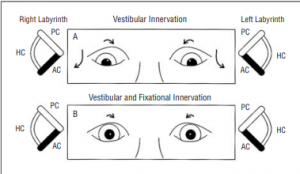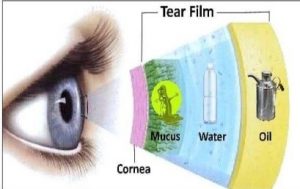The angle of deviation can be measured by doing various tests: it is the method of measuring the amount or the degree of deviation that is causing the misalignment of the visual axes.
The tests are as follows:
Hirschberg corneal reflex test: This test is based on corneal reflex. It gives a rough estimation of the angle of a manifest squint.
Procedure- the patient is asked to fixate at a point light held at a distance of 33cm, the assessment is done by comparing the corneal reflex in the squinting eye with that of the fixing eye and the deviation of the corneal light reflex from the center of the pupil in the squinting eye is noted.
Conclusion– corneal reflex displaced temporally indicate the presence of an eso deviation while nasal displacement indicates an exo deviation.A 1mm displacement of corneal reflex corresponds to 7˚ or 14 prism dioptres of deviation of visual axis. Thus corneal reflex viewed at pupil margin are roughly equivalent to a displacement of 10-15˚ (20-30 prism dioptres). Those situated half way between the pupil and the limbus are equivalent to 25˚ (50 prism dioptres) and those at limbus, to 45˚ (90 prism dioptres).

Prism bar cover test (PBCT): This test is most popular and simple method of measuring the angle of deviation objectively in various diagnostic position of gaze.
Procedure- this test may be performed at 33cm or at 6meters, the patient must fixate the target accurately and have adequate visual acuity to be able to fix with either eye. The test can be performed both with and without spectacles. The prism bar with apex towards the deviation is held in front of the deviating eye usually in manifest deviation and before either eye in latent deviation. An alternate cover test is performed by moving the occluder from one eye to the other while watching the movement of the eye behind the prism at it takes up fixation.
Conclusion– the prism strength is noted and is equivalent to the maximum measurement of angle of deviation.
Prism reflex test (Krimsky’s test): this is a very helpful method of measuring angle of deviation of squint in patient with blind or deeply amblyopic eye with or without eccentric fixation.
Procedure- to perform this test the patient is asked to fixate on a point light while keeping the prism bar with apex towards the direction of manifest squint are placed in front of the normal fixating eye till the corneal reflex is centred in squinting eye.
Conclusion- the power of prism required to center the light reflex in the squinting eye equals the amount of squint in prism dioptres.
Perimeter method: the patient is asked to fixate at O-mark on the arc perimeter with normal eye and flash light is moved along its arc till the cornea reflexion is centred in pupil of the squinting eye. This point on perimeter gives the angle of manifest squint in degrees. This method used in past is not popular now.
Maddox rod test: it is a subjective test that can measure both heterophoria and heterotropia. A Maddox rod is used for this test which is a series of parallel high-power plano-convex cylinders which convert a point source of light into a line seen perpendicular to the axis of the cylinder.
Procedure- the patient is asked to fix on a point light in the centre of a Maddox tangent scale or any point light at a distance of 6 metres. The Maddox rod is placed before one eye with axis of the rod parallel to the axis of deviation.
Conclusion- depending upon the type of deviation the red vertical line will be seen either to the right or to the left of fixation light and the horizontal line will be seen either up or down. The number on the Maddox tangent scale where the red line falls will be the amount of deviation in degree.
Synaptophore test: all types of heterophoria and heterotropias can be measured accurately both objectively and subjectively with the help of synaptophore
Hess/less screen test: the Hess screen test is based on the haploscopic principle and it utilizes the hering’s law and Hass-Lass screen is a modified version of Hess screen test.
Maddox Wing test: this is a subjective test for measuring the angle of deviation in heterophorias and small heterotropias, provided normal retinal correspondence is present.
Procedure- the wing is situated at 33cm from the eye, and the eyes are supported by septum. For horizontal deviation the patient sees the arrow with the right eye and numbers with the left eye and the patient is asked to state which white number the white arrow is pointing to. For vertical deviations, the patient observes the red arrow and states which red number it points to.
Conclusion- in case of horizontal deviation if the arrow is pointing to an even number there is a deviation and an odd number is indicative of an eso deviation. The size of deviation corresponds in prism dioptres to the number stated.
Double Prism test: it is a subjective test used to determine heterophoria especially cyclophoria.
Procedure- the double prism is placed before one eye in such a manner that the junction of the two bases intersects the pupil and is horizontal. Then the patient is asked to look at a horizontal line against an empty background which does not offer any fusional stimuli.
Conclusion- patient will see two parallel lines with the eye having double prism in front of it that is one line displaced above and other displaced below with respect to the single line seen by the other eye.
In absence of any cyclophoria, all three lines will be parallel.
In a cyclophoria is present, the single line will have an angle relative to the other two lines as follows
-in Incyclophoria, the line or lines seen by the right eye will be tilted towards right and those seen by left eye will be tilted towards left. -in excyclophoria, the line or lines seen by the left eye will be tilted towards left and those seen by left eye will be tilted towards right.
